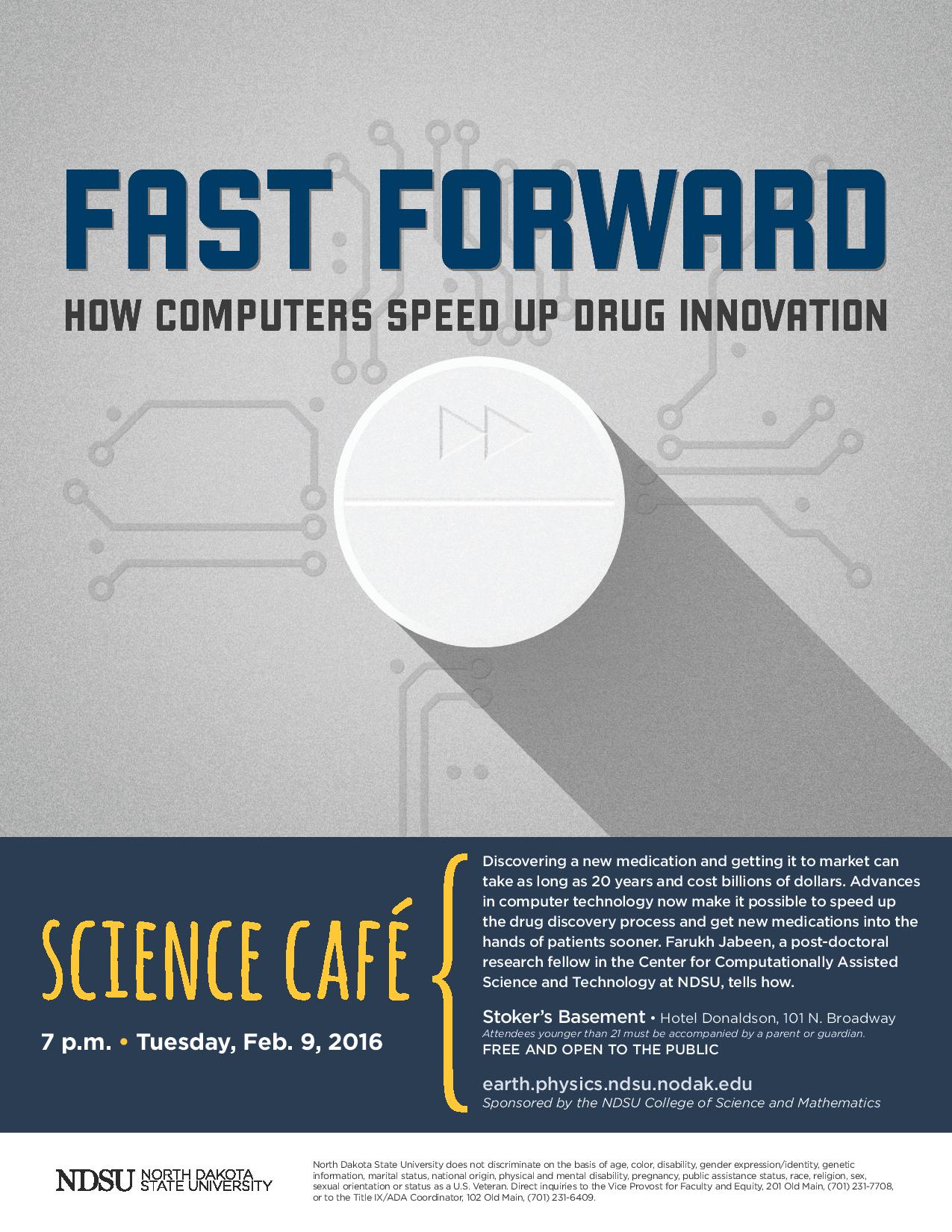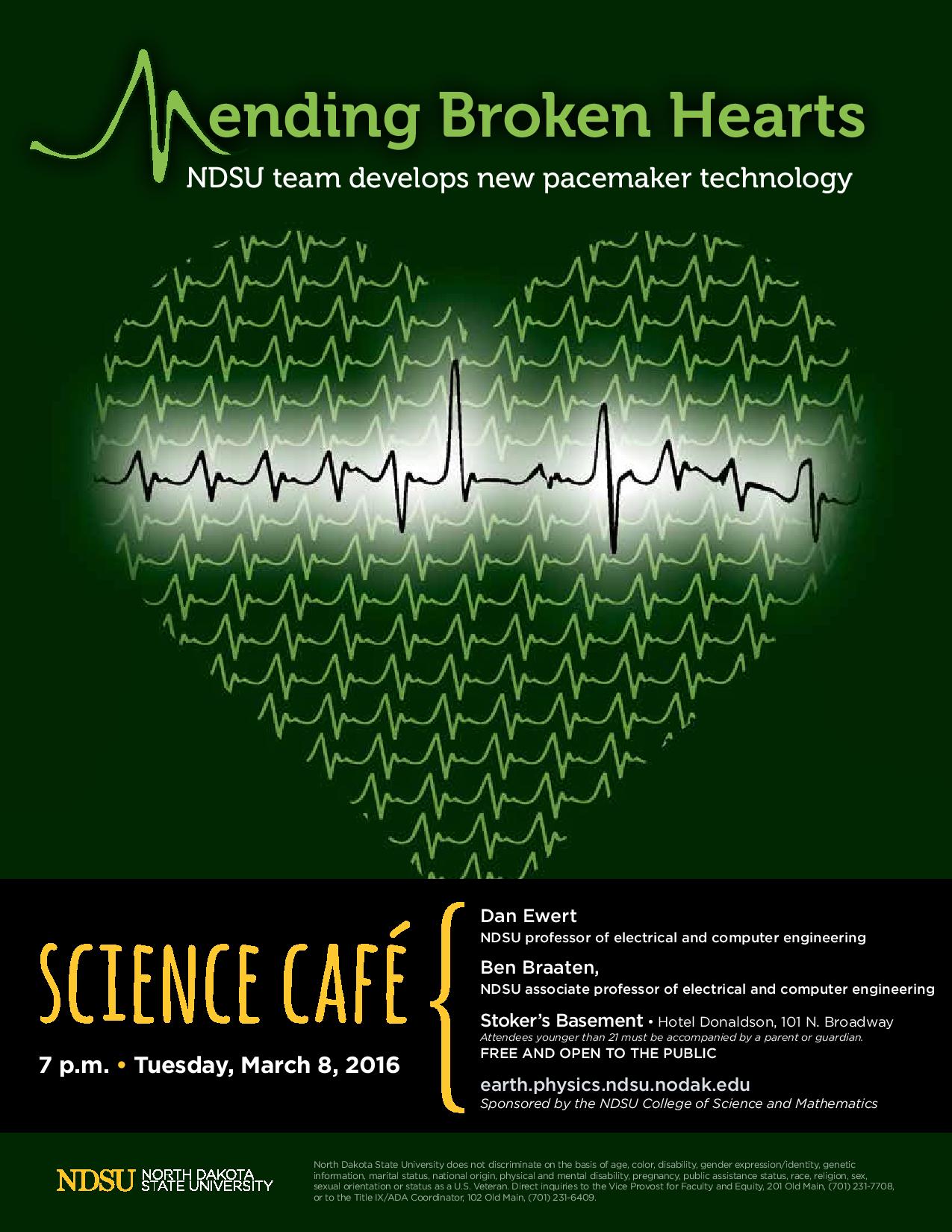
Computer Aided Drug Discovery (CADD): Parkinson's Disease
Farukh Jabeen
Computationally Assisted Science and Technology, North Dakota State University
Abstract: The process of drug discovery and development is challenging, time consuming, expensive, and requires consideration of many aspects. The average cost of developing and bringing one drug to market can range from a few hundred million dollars to more than a billion and take from 10 to 15 years before patients get the medicines they need. The vast majority of prospective drug designs fail, therefore the pharmaceutical industry prefer the fast and cheap failures in order to exploit resources for the most promising candidates. Scientific advancements during the past two decades have changed the way pharmaceutical research generate novel bioactive molecules. Advances in computational techniques and in parallel hardware support have enabled in silico methods, and in particular structure-based drug design method, to speed up new target selection through the identification of hits to the optimization of lead compounds in the drug discovery process. Computer Aided Drug Discovery (CADD), avoids the cost of synthesis and assaying large library of compounds. It provides clear structural hypothesis for inhibiting particular enzyme activity, reduces time, and increases the success rate. Drug discovery is a multidisciplinary approach and requires several concepts, disciplines, skills and techniques. Computation greatly accelerated the rate of discoveries of drugs by crossing the boundaries between disciplines in recent decades. Virtual screening speed up the drug discovery process by utilizing various tools such as cheminformatics (QSAR), molecular docking, ADMET prediction. Interesting examples of computer aided drug discovery involves several therapeutics such as Captopril, Dorzolamide, Saquinavir, Zanamivir, Oseltamivir, Aliskiren, Boceprevir, Nolatrexed, TMI-005, LY-517717, Rupintrivir, NVP-AUY922, HIV protease inhibitors (saquinavir, indinavir, and ritonavir nelfinavir and amprenavir) and HIV integrase inhibitor, (raltegravir brand name Isentress).
Parkinson's disease (PD) is a chronic neurodegenerative disorder of the central nervous system. Monoamine oxidase (MAO), plays a key role in the regulation of the intracellular concentrations of monoamine neurotransmitters and involved in neurodegenerative diseases. The rational design of new inhibitors are considered of great importance for the development of more effective treatments for these diseases. We utilized in silico strategies to discover the novel therapeutic agents for the treatment of Parkinson's and other neuro-generative diseases. In this context we utilized the various in silico tools for computation of drug like properties, prediction of activities and investigation of ligand target interactions and binding scores. Virtual screening was carried out to rank the hits by utilizing various CADD techniques such as cheminformatics, docking simulation and ADMET prediction etc.

Cardiac Pacing without Wires: It takes a village
Dan Ewert, Ben Braaten
Electrical and Computer Engineering, North Dakota State University
Abstract: About 550,000 new cases of systolic heart failure (HF) are diagnosed each year in the US, with 287,000 associated deaths annually. One form of HF is cardiac dyssynchrony, where regions of the heart contract at different times, which in turn reduces cardiac performance. Cardiac resynchronization therapy (CRT) restores cardiac performance in many patients by electrically activating two regions of the heart. However, up to 30% of CRT patients do not respond favorably to this treatment. The reasons for non-response are complex, but one promising approach is to pace more than two regions. As the number of paced regions increase, the use of additional pacemaker leads to deliver pacing energy to multiple regions becomes a greater liability due to the difficulty of implanting numerous leads, increased lead failure rates and greater flow alterations. The history, development, design and testing of a cardiac pacing system that requires no wires (leads) or internal batteries is presented. New results are presented.

Earth's Primordial Soup: how volcanoes and bacterial "waste" led to life as we know it
Lydia Tackett
Department of Geosciences, North Dakota State University
Abstract: Life has played a major role in shaping several seemingly unique features on our planet, including the concentration of oxygen in our oceans and atmosphere. Understanding how life evolved on our planet is a crucial part of our search for life elsewhere in the solar system and beyond. However, much of the rock record for this early interval in Earth's history has been destroyed or muddled by geological processes. A timeline of the major events in the history of life of Earth can be constructed using isotopic and mineralogical proxies, in addition to microfossils. Here we will review the origin and nature of the early atmosphere and oceans, the earliest known life on Earth, the Great Oxygenation Event, Snowball Earth(s), and life after the Cambrian Explosion.